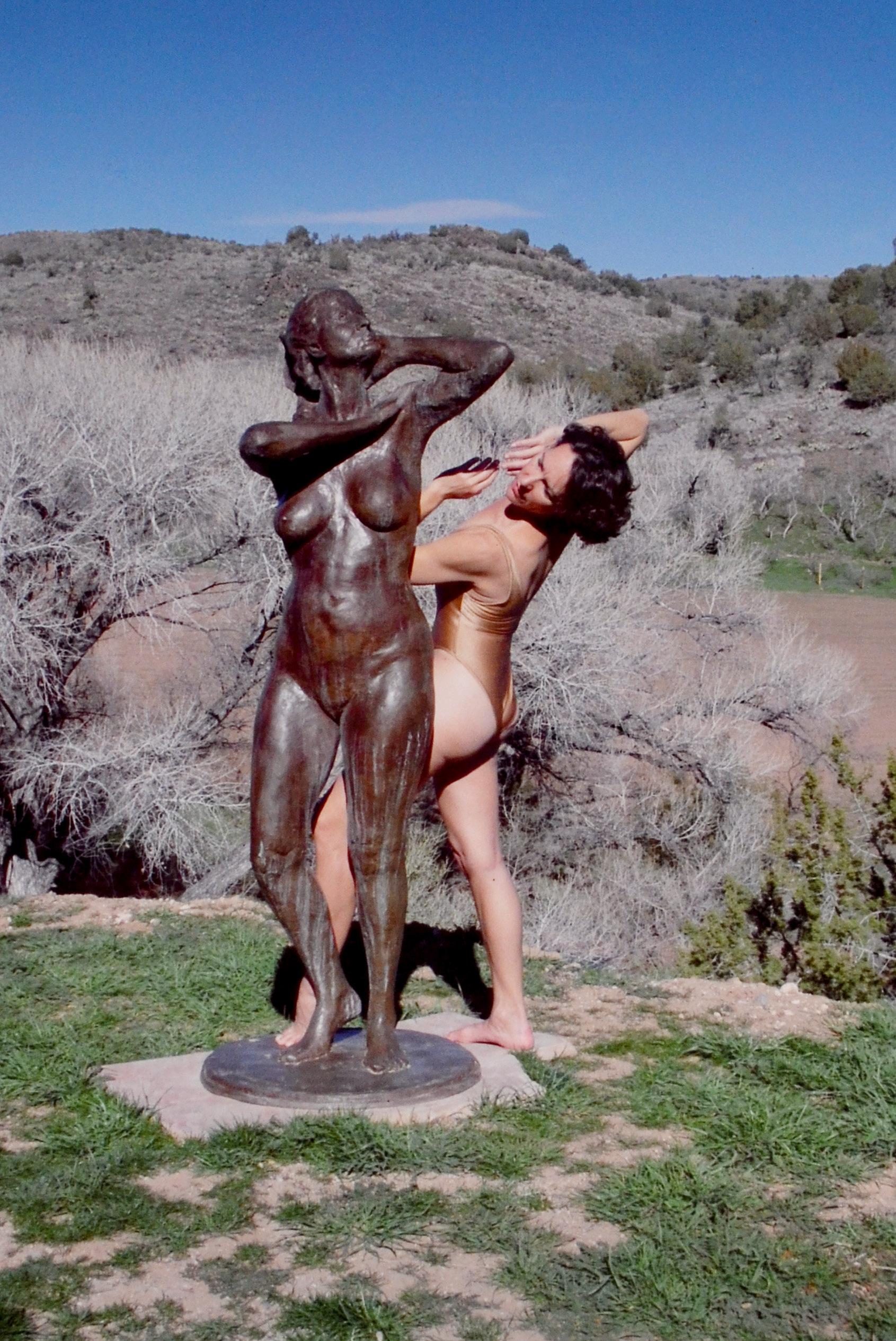
11 minute read
The Choreographic Art of Ann Ludwig
THE ART OF
Ann Ludwig
Advertisement
It is with great pleasure that Emeritus Voices presents this small but diverse portfolio of scenes from the choreographic art of Ann Ludwig. Ann’s work has been seen around the world. Before coming to ASU in 1979, she was on the faculties at the University of Iowa, San Diego State University and the University of Kansas, where she received her master’s degree in dance, music, and physiology. She had already, in 1977, formed her dance company, A Ludwig Dance Theater, which she brought with her to Tempe. During her tenure at ASU, she taught choreography, dance criticism, pedagogy, philosophy and technique, and served as Graduate Program Director of the Department of Dance. In 2011 she received the Governor’s Award for Arts in Education from the Arizona Commission on the Arts, Arizona Citizens for the Arts, and the Governor’s Office. Ann retired from ASU in 2003, but continued choreographing and directing, as well as dancing, A Ludwig Dance Theater through 2012. She has, over her career, received numerous artistic awards. The New York Times dance critic, Jennifer Dunning, said the “Ludwig’s pieces careen through a wide assortment of female responses in theater-dance that has all the ragged, irrational reasonableness of life lived slightly below the polite formalities.” We hope this will be evAnn Ludwig in ident in the following sampling from more Dialogue with Isabel. than 200 works in her productive career.
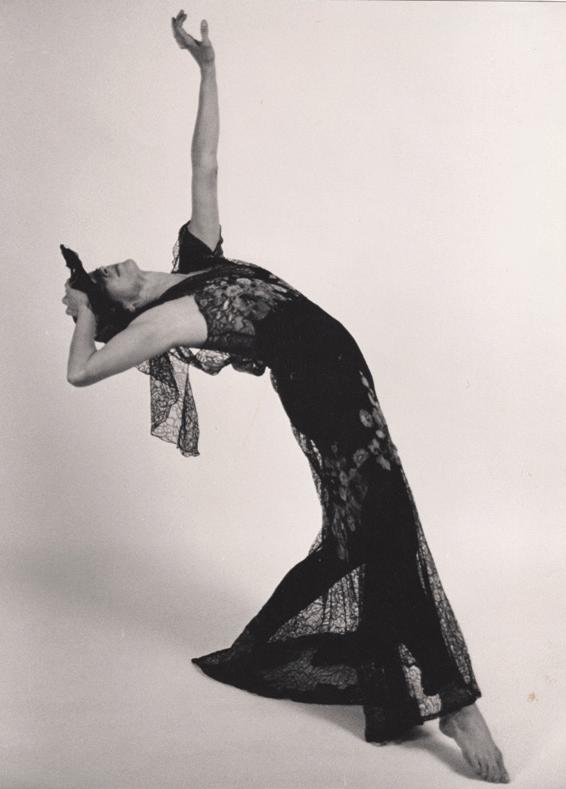
Opposite: A Woman I Know (Sculpture by John Henry Waddell) (2004). 65
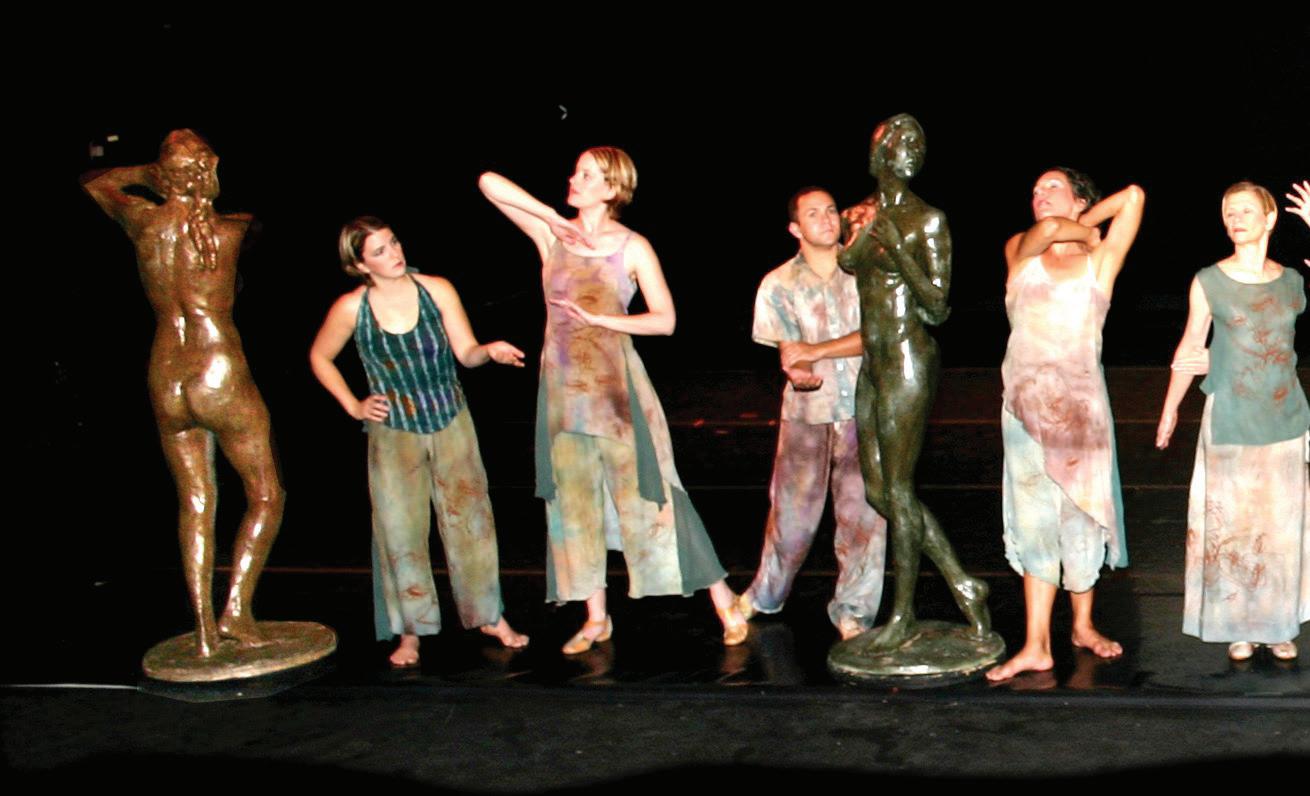
A Woman I Know
(Sculpture by John Henry Waddell, 2004)
A Woman I Know was choreographed in collaboration with sculptor John Henry Waddell, videographers Nancy Happel and Tom Eldridge and the dancers who are always part of the creative component in the work. It reflected the strength I received, marveled at, from three women no longer alive: my daughter, my mother, and a friend. Each, in her own way, embodied the ability to persevere with strength and intelligence, with kindness and humor, through many good times and horrific bad times. They personified the beauty and the stature of John Waddell’s sculptures and seemed the solidarity of existence. In thinking of these three women, many images came to mind at the core of their vulnerabilities as human beings. I started with the sense of
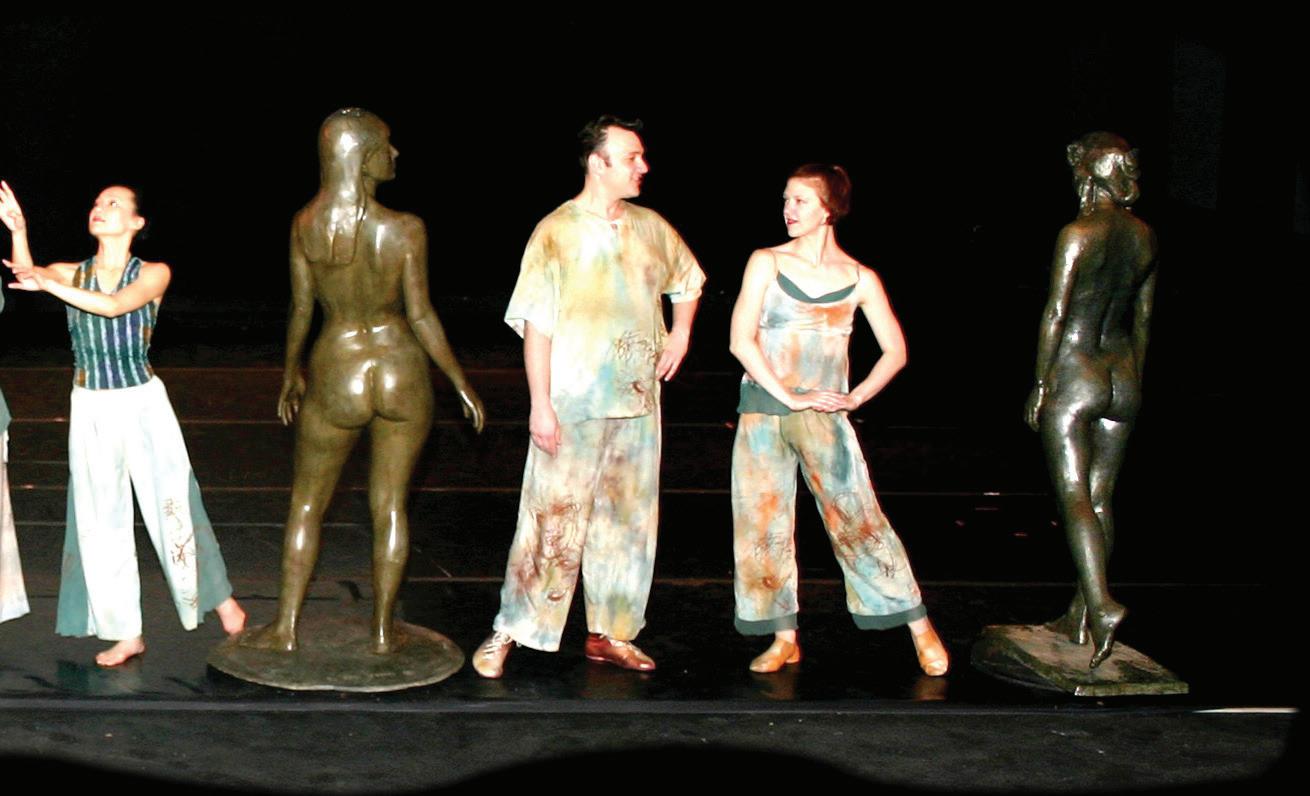
three sections, one for the family; one for the lives; one for the memories. Eight dancers drew from varied experiences and enhanced solo, duet, trio and whole group movement collections. Music selected, usually after the initial direction took hold, included Vivaldi, Wynton Marsalis, Tammy Wynette, Conlan Nancarrow, and music written by one of the three women, my daughter. A Woman I Know should not have needed choreography. Three strong women lost battles: murder; Alzheimer’s; cancer. All wars that should not have been.
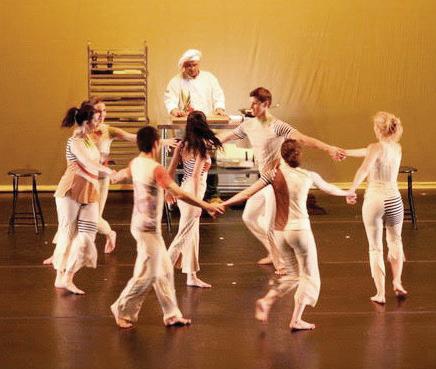
The Cheese Stands Alone (2009)
The Cheese Stands Alone was an under the tent kind of production…I was ringmaster for the dancers who played partners in assorted unconnected scenes. Hanging it all together was former dancer and current Tempe chef, Mark Vanek, in the regalia denoting the art and craft of fine cuisine. To add to the fun, my eight-year-old granddaughter flawlessly recorded a remake of The Farmer in the Dell:
Once upon a time in the land of vegetables, a farmer raised and traded them for warm sweet milk and creamy blocks of cheese. Tired of working in the fields and coming home to a kitchen full of dirty dishes, the farmer took a wife. At farmers.com he made his selection carefully, a woman who could cook with cheese, clean, and was mathematician enough to balance the budget and manipulate the cost according to the direction of the commodity market.
It was fun; it was an argument in motion; it was a piece that smelled good. The only one not affected by how the world turned was the cheese…a rich full-bodied entity with a green future. The Cheese Stands Alone.
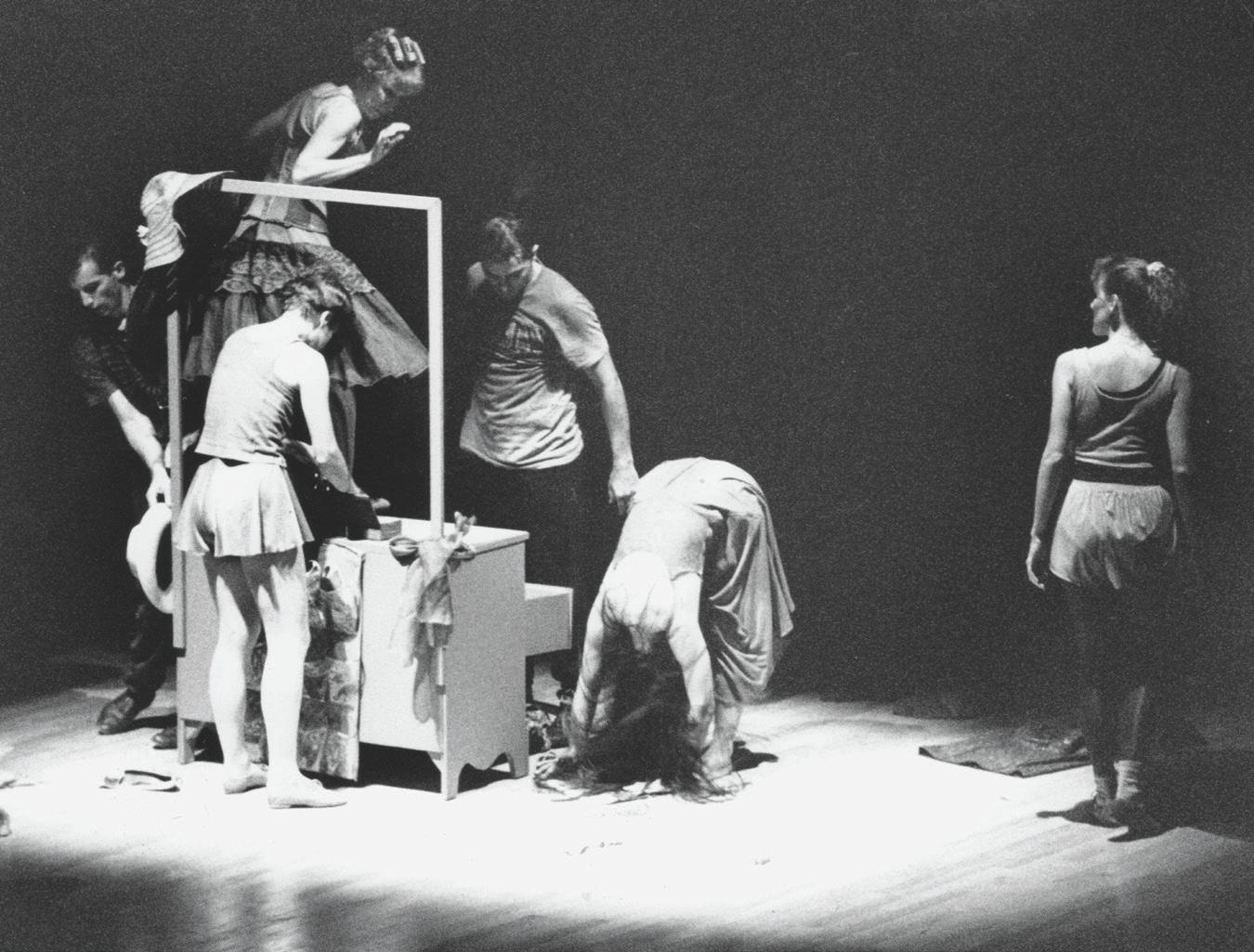
The Rooming House (1990)
The Rooming House was a multi-phase project taking the work into non-typical spaces. The first used the thrust and tier of balconies in the Herberger Theater Center that provided a vantage point surrounding the dance for some, looking down on the work for others. The second series was at the Chandler Center for the Arts where audiences sat with the dancers on stage. The Experimental Dance Laboratory at ASU with viewing from all sides required the most extensive reshaping. An evening length work, its thread centered around a rooming house, with seven dancers, each with the stretched personas one might find in your slightly run down, run-astray place in the far suburbs. Each had his or her hypothetical space giving license to the antics that happened within. As landlord, I found a way to trill out my favorite Mozart on the upright in the corner. The real music was the Haffner Serenade no. 7 by Mozart. In staging this work, I felt the pressure to orchestrate very carefully the first domino fall, knowing it would catapult the flow of the others.
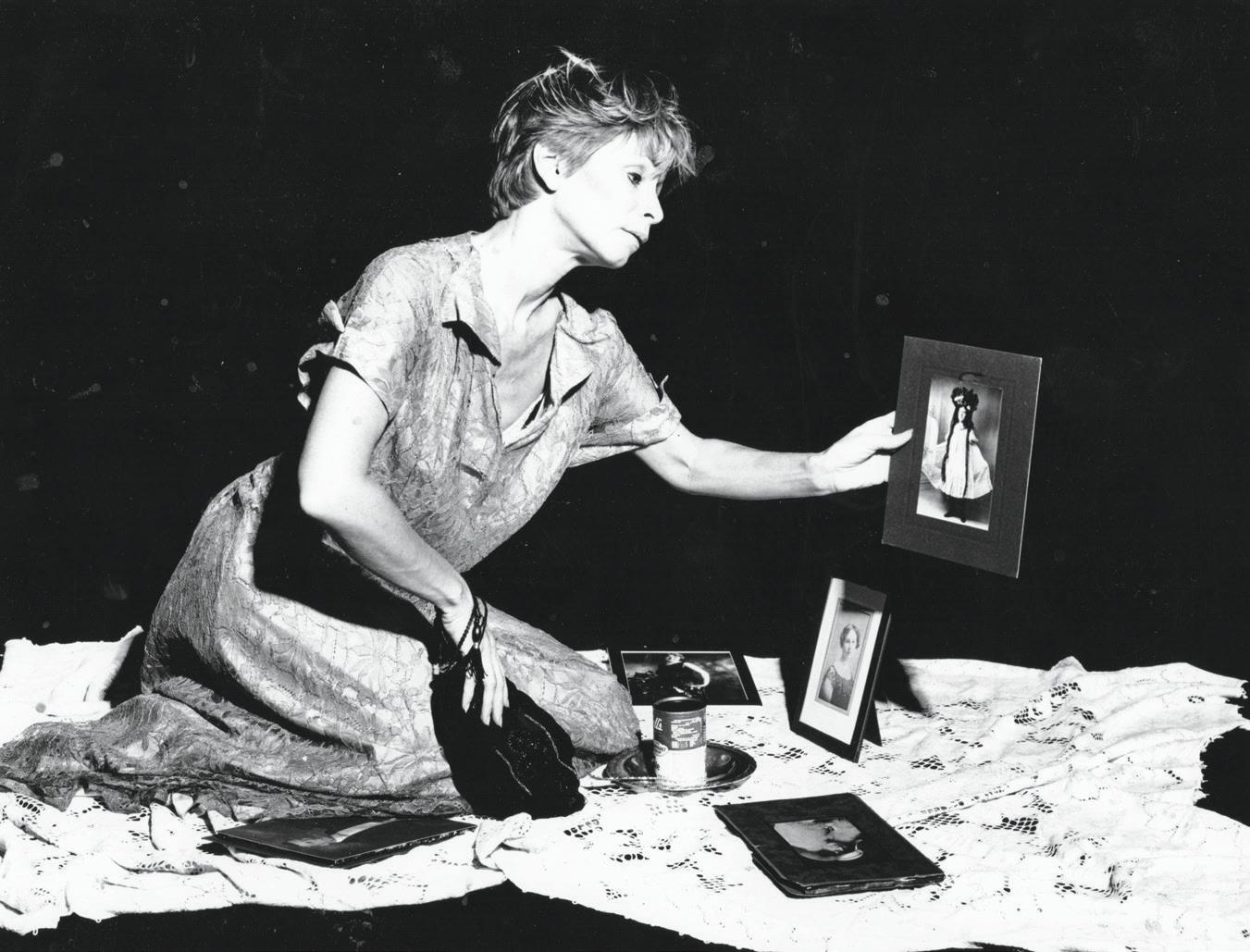
Tinita’s Birthday (1984) Danced by Beth Lessard
In 1984, A Ludwig Dance Theatre had the opportunity to be hosted by the US Embassy in Lisbon, Portugal. For five months we journeyed around the country doing ten performances and giving three-a -day workshops. Our sergeant in arms was Teresa, Portuguese staff at the embassy, whose role was to organize and facilitate our moves from place to place. She became a friend still remembered. On one of the journeys we stopped for lunch at the home of her Aunt Tinita, who smiled at Teresa’s belated birthday wishes and proceeded to share with us such celebrations past. With lace tablecloth neatly spread, she carefully arranged pictures of her passed family around the rim. And then she ate. That warm image brought so clearly the inspiration for Tinita’s Birthday…always danced by Beth Lessard. Scratchy Caruso was the music first used; there were several versions, and it evolved into several pieces through subsequent years. I never knew what Tinita ate, but vegetarian Beth always had an open can of Campbells vegetable soup. The movement progressed from spreading the cloth in somewhat distorted fashion to gently placing the aging photographs, to taking a silver spoon from a velvet pouch, to claiming the can of soup…as it all faded delicately away, just the images surviving.
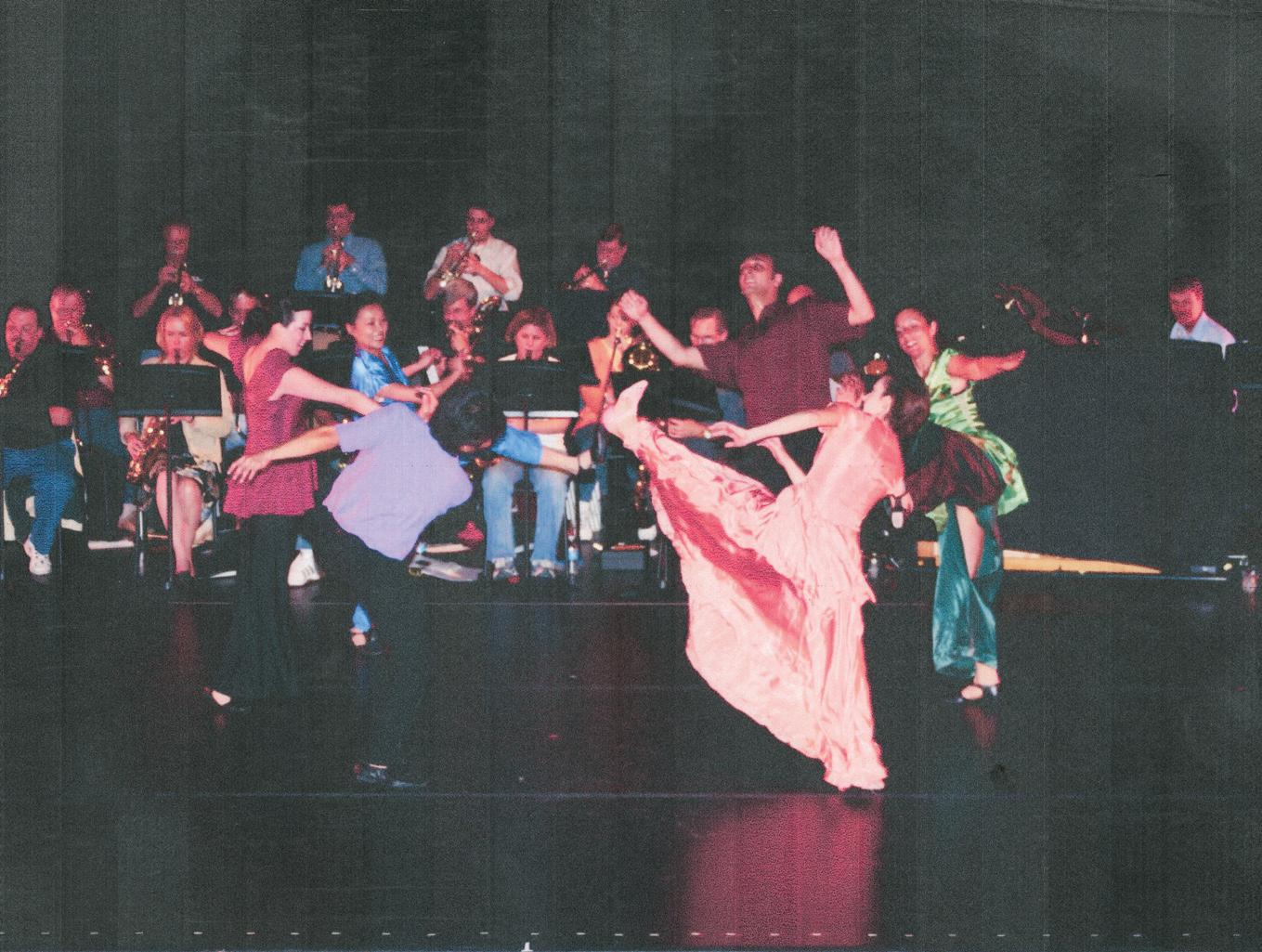
Bandstand (1998)
There is always a magic that happens when dancers are able to join with live music in performance. We collaborated with the Arizona Wind Symphony under the direction of Bill Richardson on two such occasions. Once with a forties swing era vibe, as in this picture (taken in 1998 during a dress rehearsal,) and again for a full evening performance in 2006, On the Beating Path, which also included narrative by Gus Edwards, actor and playwright. Such collaborations make for exciting and challenging moments when everyone is doing their notes, the words, and the steps, all at the vanishing point.
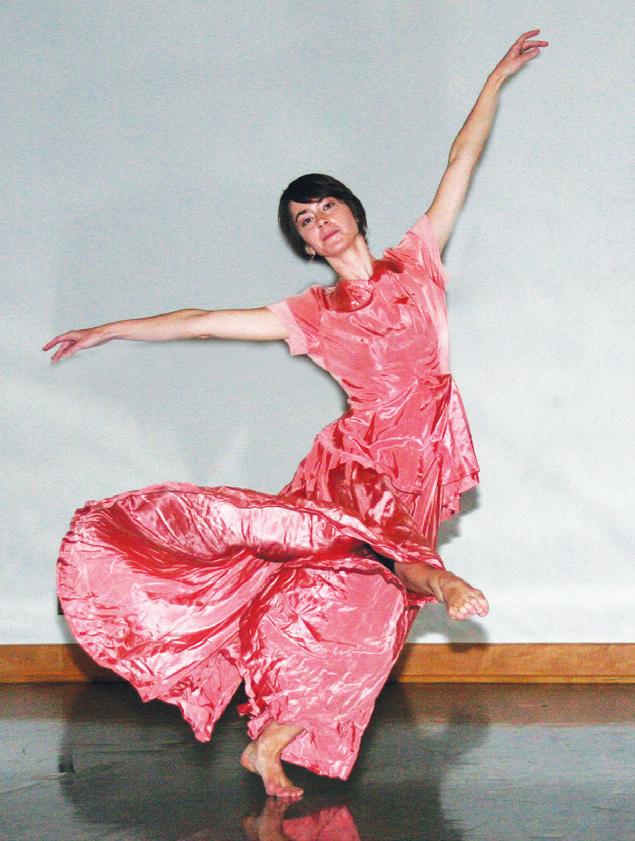
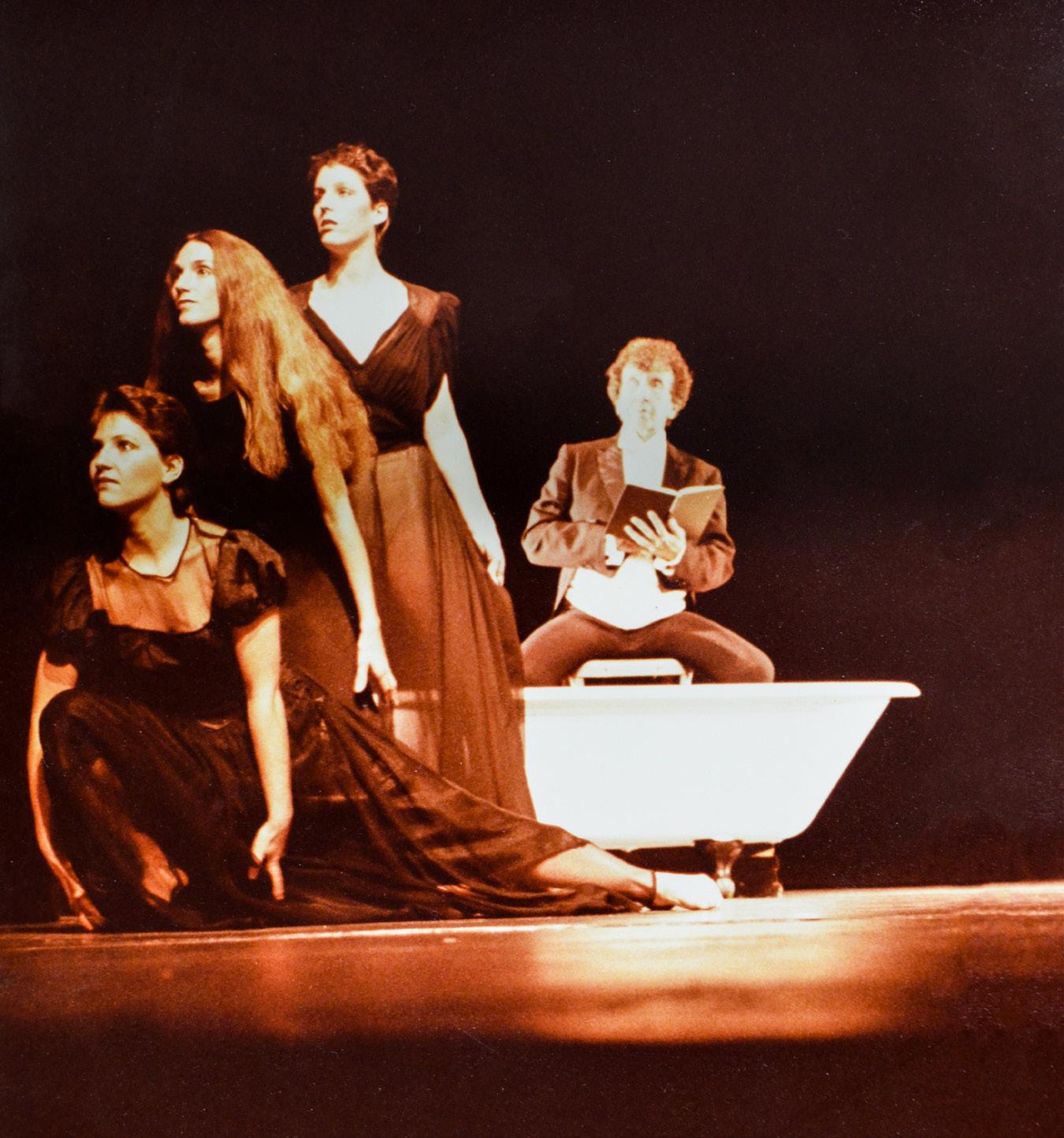
Five Poems for Computer, Narrator, Dancers, and Bathtub (1982)
Five Poems was one of the first works I did in my ASU journey; it was submitted by judges for the American College Dance Festival to the Kennedy Center Gala (the concert was then sadly canceled that year). Moved to A Ludwig Dance Theatre, its longevity—four casts until its final performance in 2012, and five readers, Bathtub was one I kept coming back to because there seemed a brief whiff of mystery that could always be pushed around. Three dancers in otherworldly black antiquated and swashbuckling dress cavorted around the clawfoot tub from which came the sounds of David Gregory’s music punctuated by the poetry of William Carlos Williams, Wallace Stevens, Carl Sandburg: “swinging their butts.” The darting looks and leaping, to me, opened a window into a stranger world, one to be explored.
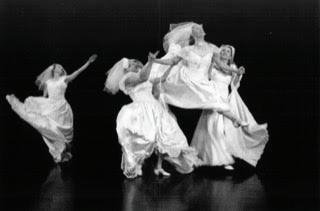
‘Til Death Do Us Part (1999)
The longest running piece, and most time spent in producing, was a collaboration that intimately wove the composer, the lyricist, the dancers, the videographer, and the choreographer into a fine cloth stitched together, stanza by stanza, on marriage vows, fifteen scenes of them. Billed as a series of vignettes about people who choose to say “I do”, the magnitude of the parts, each individual in structure, found a way into a greater whole after two years of collaboration. Initially lyricist Candace St Jacques, composer Brian Kunnari and I spent some time together roaming an exhibit of surrealistic paintings and playing with toys in a children’s museum, an outside the box game. Videographer Tom Eldridge found that taping toasters, many toasters, in Sears was useful as an image behind the bride unwrapping tons of the same.
Maybe the part often remembered was the six dancer brides with full regalia as the video backdrop honed in to six gigantic horses draped in white gowns and people riding the carousel at Encanto Park. Eventually the merrygo-round ride ended in a wedding. As the walk down the aisle concluded a faint breeze caught one of the filmy veils lifting it to the sight of a skeleton face. Lights faded to out.
Scene 12, In Sickness and In Health, produced lyrics lamenting the raw reality Alzheimer’s has on a couple. I walked across the stage, gently guiding, real life and well, my husband Tom. Only several years later did we find he was beginning his own journey of a neurodegenerative disease.
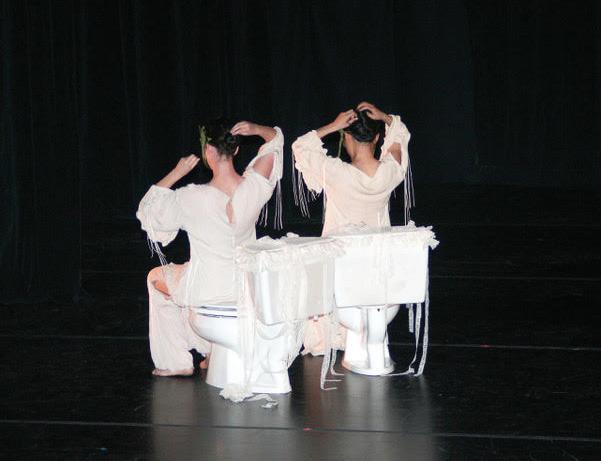
Comfort Zone (1998)
With approximately two hundred choreographies ranging from ten to seventy minutes, it was always a respite to bring past dance theatre pieces to the front for an update. One such work was Comfort Zone, first done with two MFA students in 1998. One, after graduating, permanently joined A Ludwig Dance Theatre and was part of that work again ten years later. As a fan of pairing unlikelies, the space sharing of Martha Stewart, jellyfish, and “comfort women” from the WWII era seemed to have a common denominator. With text from all three, tunes from Streisand and Garland, and assisted by Bizet and Weil, the visuals, which included scrim size video, satisfied my sense of putting together a 1000-piece puzzle. Once the edges are in place…
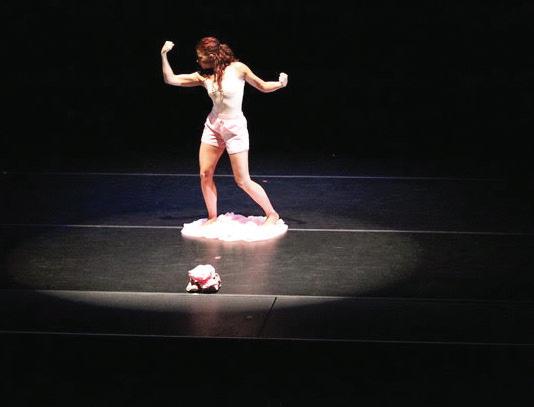
Ain’t Over ‘Til the Fat Lady Sings (1984)
An early piece that had a long life, Ain’t Over started as a solo I performed to a couple of county pieces plus the Iowa farm report. Titled It’s So Pink It Must Be a Ballet, the sequence of arm strengthening body poses, a three-minute circular run and a full load of pink net furled and swirled to the tune of Tennessee Waltz, encased what had become stereotypes of women in our society. It was soon the precursor of the longer work. Two women and one man dove into the roles dictated by how we live until finally, to the voice of Kate Smith, we were left with the image of two women, each facing upstage in front of ironing boards, the blue and red striped slips pulled up over their heads, hands clenched behind bare backs as Kate finished America. Additional music for this section was from Nancarrow and Chopin. Completed in New York and given a great New York Times review, it took a firm place in our touring repertoire. It was last performed in 2012.
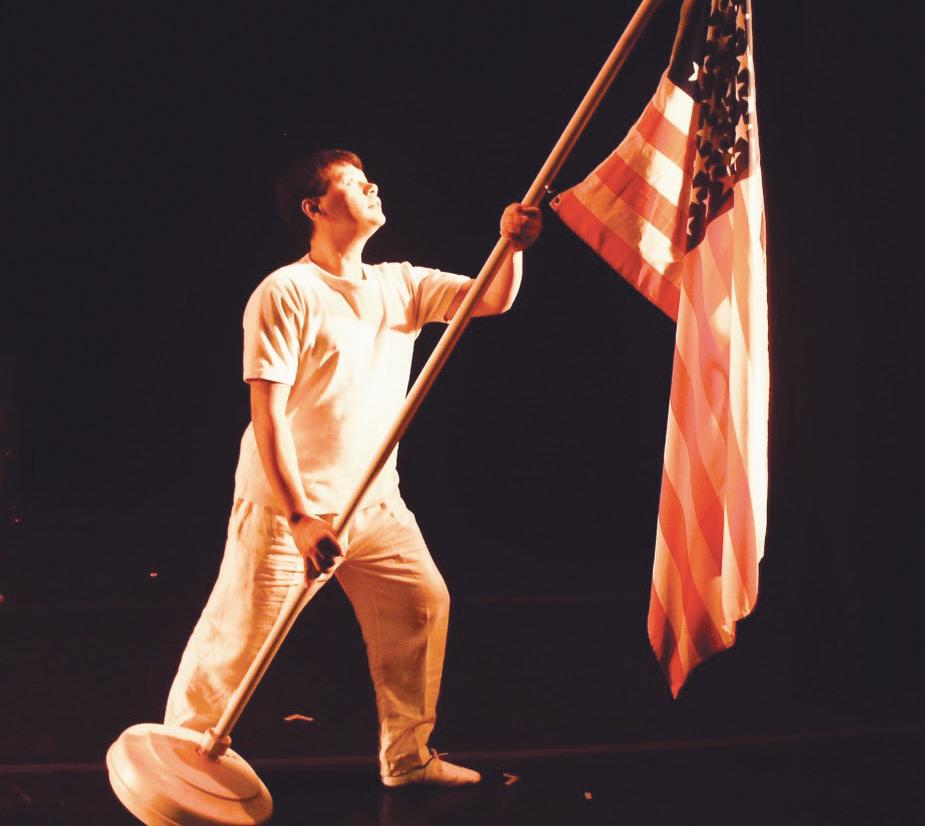
The Constitution (2012)
I contribute this to the assortment selected for Emeritus Voices because it was the new work in the last full concert I produced with A Ludwig Dance Theatre. The first section of that concert was a ‘looking back’…with past works; the second part included four guest choreographers, each fulfilling their sense of what we named The Constitution. Five parts made up the whole: first: The Candidates, a duet I choreographed on two of the contributing choreographers; second, in four separate sections, The People. An added challenge was the intention of letting the audience arrange the order of the middle three dances. Part one and five remained the same; sections two, three, four were interchangeable. At intermission the audience, earlier shown movement phrases of those three sections, texted a sequence, the tabulation of which prompted the sound person to pull the right order of music for that particular performance. In addition to the challenge of the music, the choreographers of those sections had to be able to place their dancers where the other two sections could be started. The six dancers were apprised of the order just before the first section began. This gave an added twist to the making of dance: audience participation.






